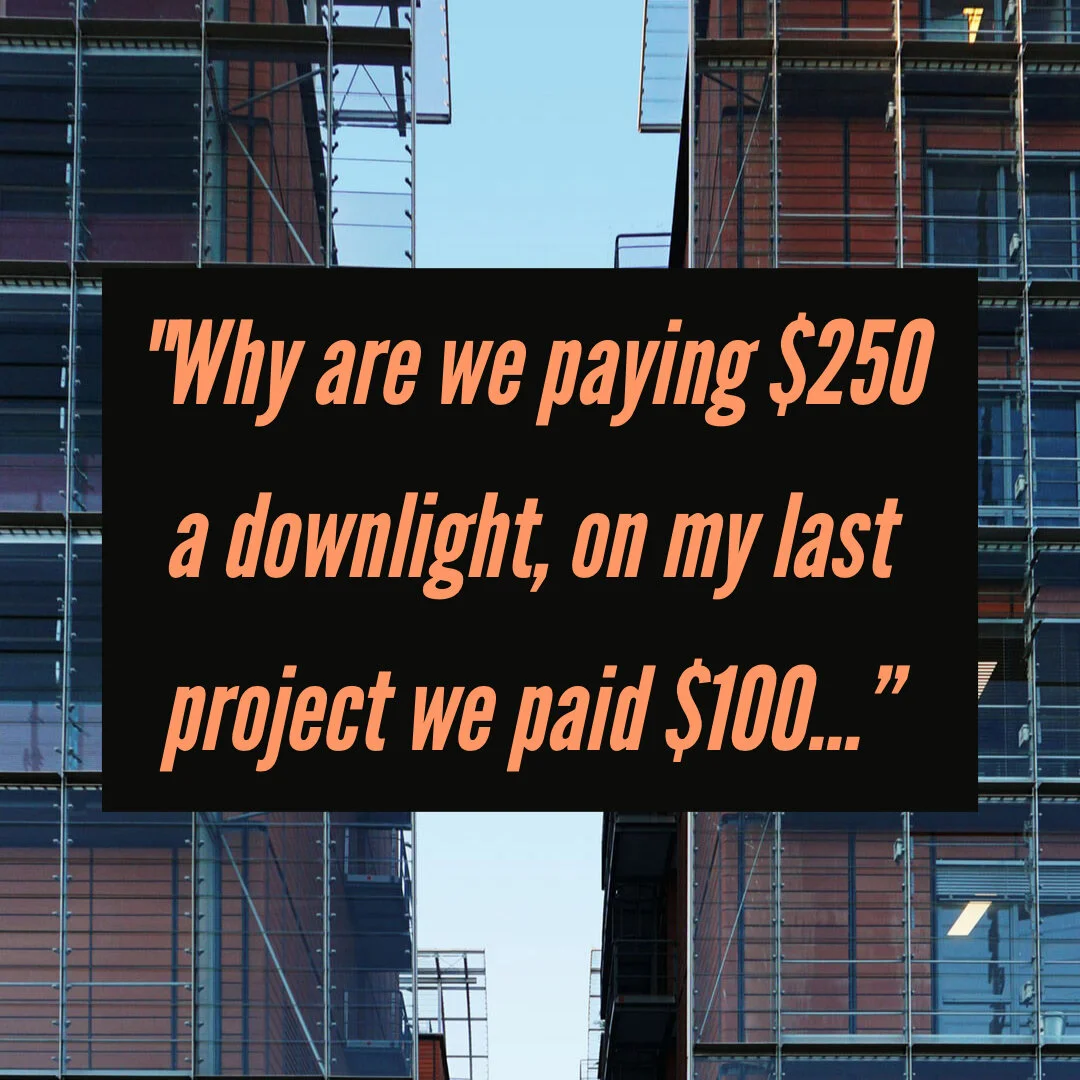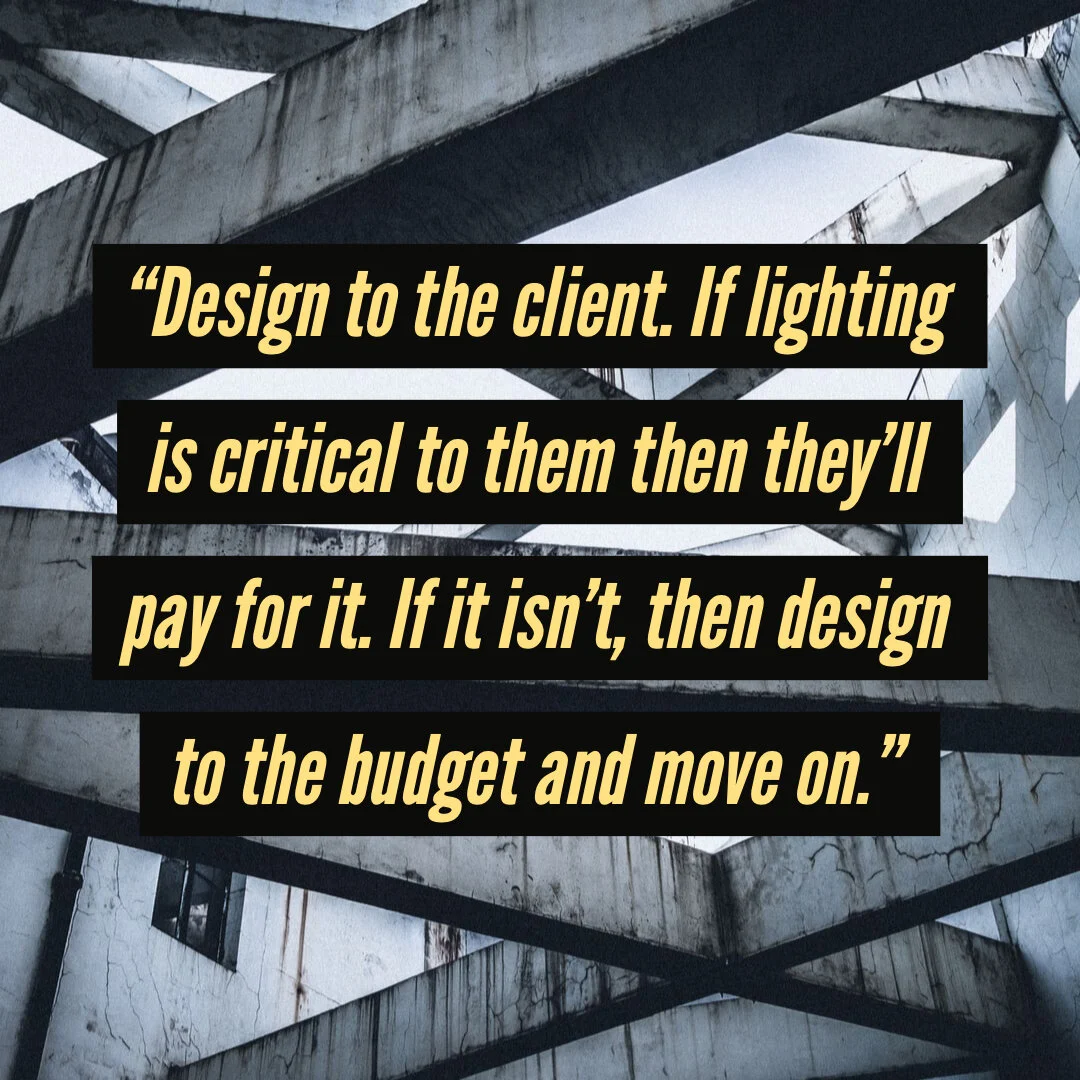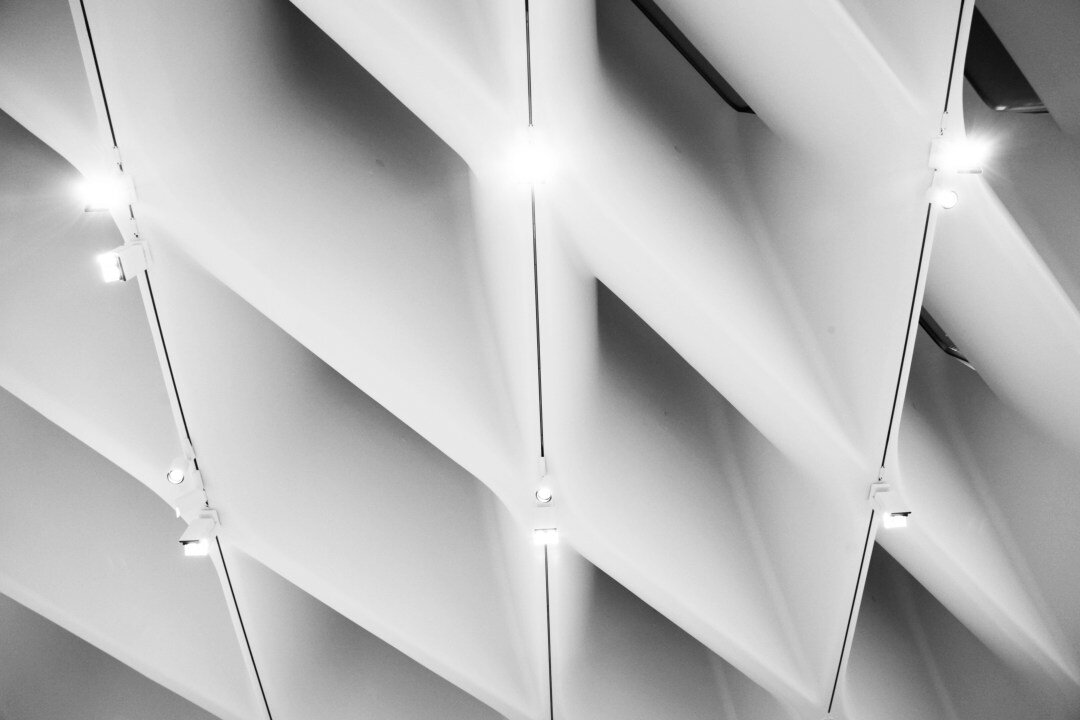Your project is being priced out...constantly
There’s a trend that has been building over the last few years. It’s not a technology trend or even a design trend (though rings are still in, as are louvers and small slots). The trend I see day in and day out is the fight for price. We live now in an age of constant VE. Value engineering is industry accepted term for "make the project less expensive" and more and more no matter what pieces of a construction project are over budget, it's the lighting budget that is chased down over and over again.
Value engineering, like many things in our culture, is not really new the difference is that it's constant. Projects are being priced and estimated long before anything resembling a "bid set" is created. From the moment a design specification is issued to the project team, lighting designers should assume it is being priced and in a very real way "VE'd" leading to owner's representatives questioning pricing and specifications long before the design is complete.
There is a real cost to this - by constantly pricing the project before the design team has had a chance to explain and justify each design choice, it creates an adversarial relationship. Designers want to create the most amazing space possible, owner’s reps want to protect the bottom line. Caught in the middle are lighting distributors and contractors being asked to provide line item pricing for projects earlier than ever before, so every nickel is getting tracked. It's no longer "$150,000 seems high for the lighting?" It's "why are we paying $250 a downlight, on my last project we paid $100…” Comments like that emerge even if the specification on those items don’t match.
This is not a weird trend, it's the new normal. I'm regularly hearing from my designers some version of, “we're late and over budget, and they signed our proposal yesterday.”
So how do we handle the age of constant value engineering? There are a few strategies we can collectively employ to do our best to hold specifications and get the projects to look the way they should.
- Know what things cost.
- Design to the client.
- Justify the specification from the moment it's published.
- Learn all the players involved.
Know what things cost
This might sound obvious, but how much items cost is still a surprise to many designers. When I make presentations on products to specifiers, even the most sophisticated, they always ask about pricing, but never write down the answers. They'll vaguely remark on something being "pricey" or "reasonable" or "that's what I'd expect" Then later there is genuine surprise at the cost of items previously discussed. If price is going to be critical (and it almost always is) then start by knowing what things are going to cost - treat it like you would lumen output or CRI. It's part of the equation.
Design To The Client
When I raised the topic of Value Engineering to a veteran lighting designer, his immediate response was, “Design to the client. If lighting is critical to them then they’ll pay for it. If it isn’t, then design to the budget and move on.” This attitude comes with the maturity and security of knowing not every job is going to win a Lumen Award and you’ll secure more work over time if you design to the client’s _actual _priorities and not your own.
Justify The Specification When It’s Published
The reality of course is that many clients don’t actually know their priorities, or at least they don’t have them well defined. They want beautiful lighting, but also want a tight budget. In this case, it’s time for justification. I recommend justifying the spec from the moment it’s published. My recommendation is to make the argument for the specified fixture right in the lighting fixture schedule.
A column that reads Design Reasoning or Specification Justificationcan be used to insert why a particular product was specified.
This product was chosen because it has the most even 19x59 degree graze of any linear product we’ve evaluated at this price point. It was also chosen because of the integral line voltage drivers making for faster and easier installation saving hours on the installation side. I would also recommend including such a column for another reason. You can choose language like “substitutions are allowed for this type. It is not critical for the design intent.” A sentence like this for the back of house areas or other non-critical fixture types signals to the project team that you’re not insisting on getting your way across the board and that budget is a factor.
Learn The Players Involved
The lighting industry is a very regionalized business. Some markets are “spec” markets where projects are largely bid to the specification. Others are “package” markets where local reps are expected to bundle the project and win or lose the entire thing. Knowing what kind of a market you’re getting into will prepare you for how your project will likely get handled. It will be up to you to decide how much of a fight the specification is worth. There are _always_ways to get what you want on the project, but the best way is to have a spec that makes sense and is justifiable to the owner. Knowing if the owner has a close relationship with the contractor or the suppliers will go a long way to knowing who is running the job who needs to be convinced.
This Is A Topic That Needs More Discussion
Which is why I’m thrilled to be speaking on this topic at Lightfair. My talk is meant to the be the beginning of a conversation, not the end of it. We need to talk more openly and honestly about how we specify, purchase and build jobs. Baked into the phrase “value engineering” is the implicit search for the most valuable elements of a project’s design. If we cannot articulate the value of better lighting, lighting that is worth more dollars, we will always lose in the value engineering conversation. Lighting designers are getting hired more and more to clarify complicated lighting systems and specifications, rather that create beautiful, effective lighting. It’s incumbent on us as an industry to explain the value of light and lighting regularly. If we want to get great lighting on jobs, we have to make sure that value is understood at the outset.








